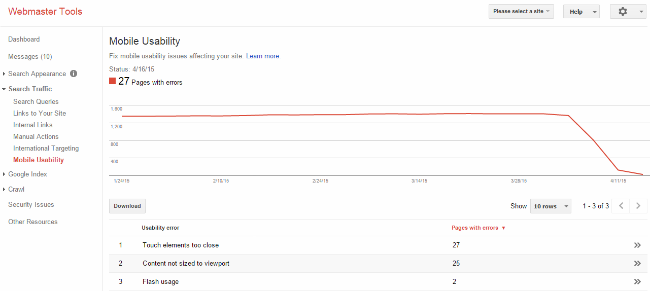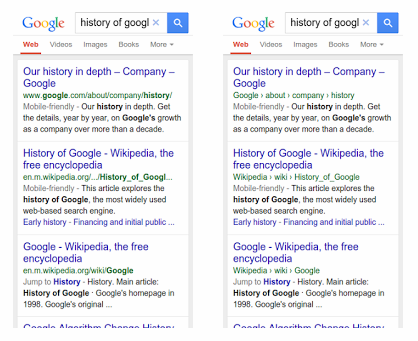It has finally arrived, the 21st April has been and gone, the Mobile Friendliness Update was rolled out by Google. Did you feel it?

Uncharacteristically Google actually gave us plenty of warning about this algorithm update, enabling e-business owners and website managers to panic and web developers to cancel all holiday for the last 8 weeks! We told you not to panic but any kind of algorithm update does make people a bit jumpy so we understand your state of high-stress… But was it necessary?
What was the Update about?
Google announced the official launch of this algorithm update on their Webmaster Central Blog on 21st April where they said:
“We’re boosting the ranking of mobile-friendly pages on mobile search results. Now searchers can more easily find high-quality and relevant results where text is readable without tapping or zooming, tap targets are spaced appropriately, and the page avoids unplayable content or horizontal scrolling.”
At the same time they clarified that this Update only affects mobile search results and that it applies to individual web pages, not entire websites. Both of these things should be reassuring to webmasters. When Google first announced this Update they also released a Mobile-Friendly Test tool and added a Mobile Usability Report to Google Webmaster Tools (see below), to help webmasters ensure that their websites are as mobile friendly as possible.

So Google really does want to help webmasters to do a great job for the end user. Indeed this Update was quietly preceded by an internal update by Google to the way that the search results are displayed on mobile to improve the User Experience. Google is no longer pulling full URLs into the mobile organic search results, it is now displaying them in a breadcrumb style that will make it clearer to users where they are going on a website:

The Impact
It is obviously very early days to be making any definitive conclusions, particularly as Google has said in its FAQs about the Update that the roll-out will happen over a week. Nevertheless, we have seen some early impacts across the sample of 6 websites we analysed:
| B2C eCom | B2C eCom | B2C eCom | B2C eCom | B2C & B2B eCom | B2C & B2B Lead Gen | |
|---|---|---|---|---|---|---|
| % indexed pages with mobile errors * | 15% | 49% | 0.7% | 23% | 23% | 0% |
| % mobile Google UK rankings no change ** | 100% | 100% | 100% | 100% | 100% | 100% |
| Change in SEO traffic from mobile *** | 0.55% | 0.68% | -3.96% | 5.10% | -30.77% | 200.00% |
* Based on number of pages with mobile errors as a percentage of indexed pages shown in Google Webmaster Tools
** Monday 20th April to Tuesday 21st April 2015
*** Tuesday 21st April vs. Tuesday 14th April 2015
Whilst we can see that so far in the Google UK mobile ranking results there has been no change in rankings for any of the tracked keywords there has been a fluctuation in SEO traffic from mobiles. Unsurprisingly the site with the highest proportion of pages with mobile usability errors has seen a noticeable drop in SEO traffic from mobiles whilst the site with 0 mobile usability errors saw the biggest increase in SEO traffic from mobile. All other fluctuations are at a level that we can assume there has not yet been an impact from the Update.
I will be doing further analysis when we have more data to look at, so watch this space by following my contributions to the blog. I also write about digital marketing strategy and best practice, or sign up to the ThoughtShift Guest List, our monthly email, to keep up-to-date on all our blogposts, guides and events.






